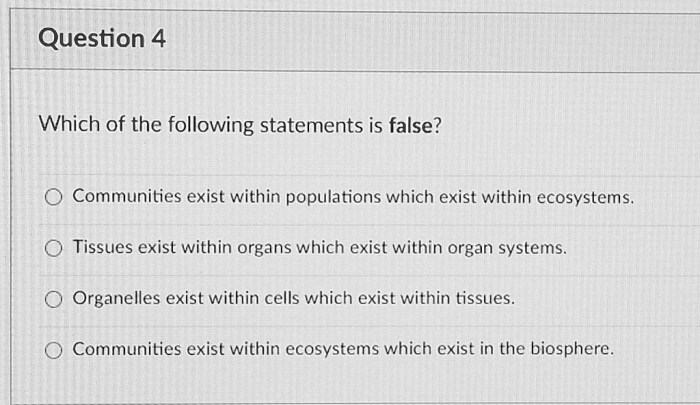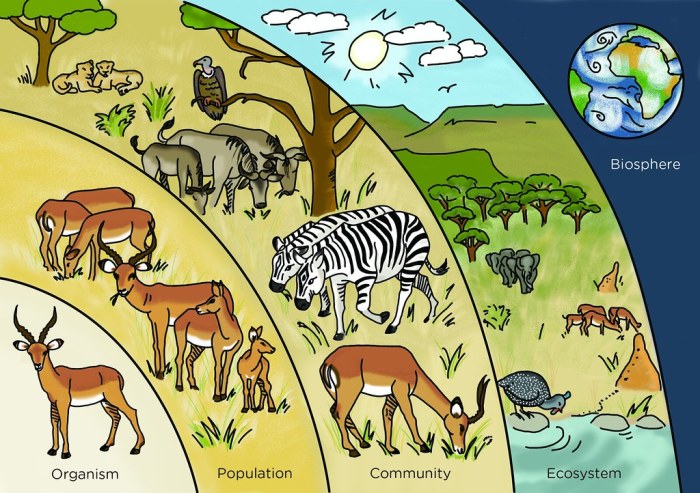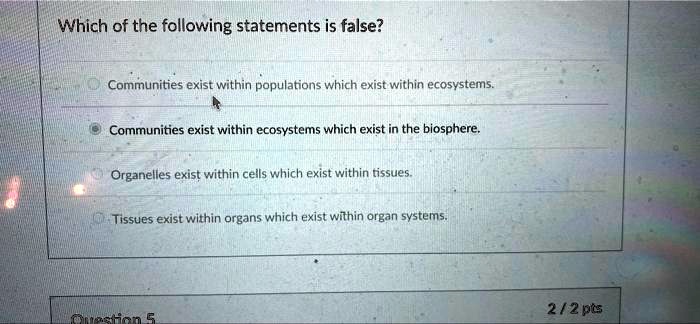Communities exist within ecosystems which exist in the biosphere, forming a complex and interconnected web of life. This intricate tapestry is characterized by a remarkable diversity of organisms, each playing a vital role in maintaining the delicate balance of nature.
From the smallest microorganisms to the largest mammals, every species contributes to the stability and resilience of the ecosystems they inhabit.
Within this vast network, communities are shaped by a multitude of factors, including climate, geography, and the availability of resources. These factors influence the composition and dynamics of communities, determining which species thrive and which struggle to survive. Understanding the intricacies of community formation and composition is crucial for unraveling the complexities of ecosystems and their role within the biosphere.
Communities Within Ecosystems

A community refers to a group of interacting populations of different species living in the same area. Within an ecosystem, multiple communities coexist, forming a complex web of ecological interactions.
Different types of communities exist, such as plant communities, animal communities, and microbial communities. Each community has its own unique composition and structure, influenced by factors like species diversity, environmental conditions, and interspecific interactions.
Factors Influencing Community Formation and Composition
- Climate:Temperature, precipitation, and sunlight availability shape the types of species that can thrive in a community.
- Resources:Availability of food, water, shelter, and other resources influences species abundance and distribution.
- Competition:Species within a community compete for resources, leading to the survival of the fittest and influencing community structure.
- Predation:Predators regulate prey populations, affecting species diversity and community composition.
- Symbiosis:Interactions such as mutualism, commensalism, and parasitism influence species interactions and community dynamics.
Ecosystems Within the Biosphere
The biosphere encompasses all life-supporting environments on Earth, including land, water, and the atmosphere. Ecosystems are self-sustaining units within the biosphere, characterized by specific physical and biological components.
Major types of ecosystems include forests, grasslands, deserts, oceans, and freshwater ecosystems. Each ecosystem has unique characteristics, such as climate, vegetation, and animal life.
Interactions and Interdependence Between Ecosystems
- Nutrient Cycling:Ecosystems exchange nutrients through processes like photosynthesis, decomposition, and nutrient transport.
- Energy Flow:Energy flows through ecosystems from producers to consumers to decomposers, sustaining ecological processes.
- Habitat Provision:Ecosystems provide habitats for various species, influencing their distribution and abundance.
- Climate Regulation:Ecosystems regulate global climate through processes like carbon sequestration and water cycling.
Interconnections and Dependencies

Communities within ecosystems and ecosystems within the biosphere are interconnected and interdependent.
Changes in one community can cascade through other communities and ecosystems. For example, the loss of pollinators in a plant community can impact seed production, affecting animal populations that rely on those plants for food.
Importance of Biodiversity for Community and Ecosystem Stability
Biodiversity plays a crucial role in maintaining the stability of communities and ecosystems.
- Resilience:Biodiversity enhances ecosystem resilience by providing multiple species that can adapt to changing conditions.
- Redundancy:Multiple species can perform similar ecological functions, ensuring that essential processes continue even if one species is lost.
- Stability:Diverse communities are more resistant to disturbances, such as natural disasters or invasive species.
Human Impacts and Conservation

Human activities have significant impacts on communities and ecosystems.
- Habitat Loss and Fragmentation:Deforestation, urbanization, and agriculture reduce and fragment habitats, threatening biodiversity.
- Pollution:Air, water, and soil pollution can harm species and disrupt ecological processes.
- Climate Change:Rising temperatures and altered precipitation patterns affect species distributions and ecosystem functioning.
Conservation Strategies, Communities exist within ecosystems which exist in the biosphere
- Protected Areas:Establishing protected areas, such as national parks and wildlife reserves, safeguards habitats and species.
- Sustainable Practices:Implementing sustainable land use, agriculture, and fisheries practices minimizes environmental impacts.
- Species Recovery Programs:Conservation efforts focus on recovering endangered or threatened species, ensuring their survival.
- Education and Awareness:Raising public awareness about the importance of biodiversity and conservation promotes responsible behavior.
FAQ Explained: Communities Exist Within Ecosystems Which Exist In The Biosphere
What is the difference between a community and an ecosystem?
A community refers to a group of interacting species living in a particular area, while an ecosystem encompasses the community and its physical environment, including abiotic factors such as climate and soil.
How do human activities impact communities and ecosystems?
Human activities, such as habitat destruction, pollution, and climate change, can disrupt the composition and dynamics of communities, leading to species loss and ecosystem degradation.
Why is biodiversity important for the stability of communities and ecosystems?
Biodiversity provides resilience and adaptability to ecosystems, allowing them to withstand disturbances and maintain ecological balance.